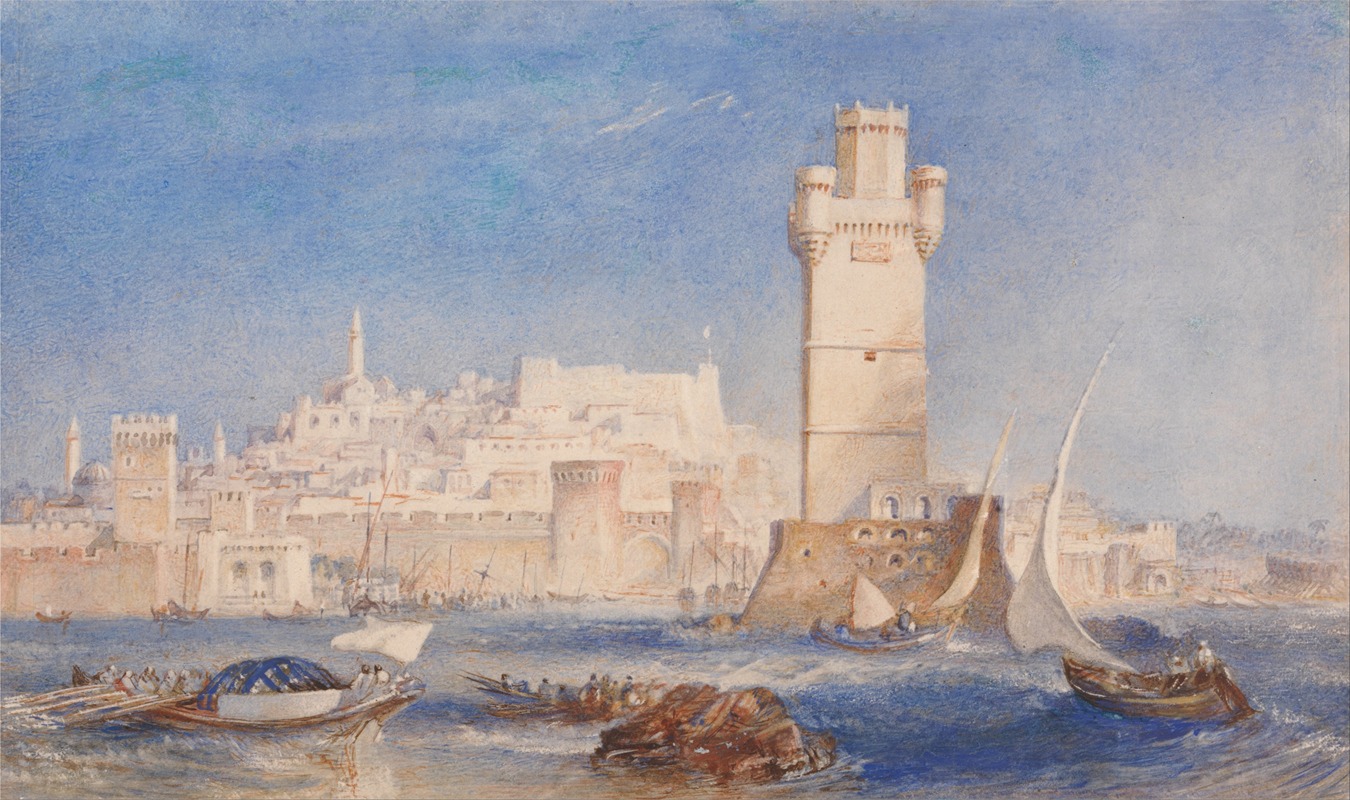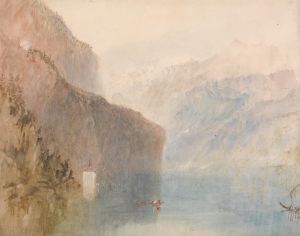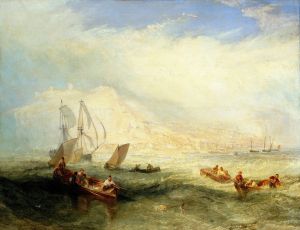
Rhodes
A hand-painted replica of Joseph Mallord William Turner’s masterpiece Rhodes, meticulously crafted by professional artists to capture the true essence of the original. Each piece is created with museum-quality canvas and rare mineral pigments, carefully painted by experienced artists with delicate brushstrokes and rich, layered colors to perfectly recreate the texture of the original artwork. Unlike machine-printed reproductions, this hand-painted version brings the painting to life, infused with the artist’s emotions and skill in every stroke. Whether for personal collection or home decoration, it instantly elevates the artistic atmosphere of any space.
Joseph Mallord William Turner, a prominent figure in the Romantic movement, is renowned for his expressive colorization, imaginative landscapes, and turbulent marine paintings. Among his vast body of work, "Rhodes" is one of the pieces that reflect his fascination with light and atmosphere, although specific details about this painting are not extensively documented.
Turner was born in 1775 in London and demonstrated artistic talent from a young age. He entered the Royal Academy of Arts at the age of 14, where he honed his skills and developed a keen interest in capturing the sublime beauty of nature. Throughout his career, Turner traveled extensively, drawing inspiration from the landscapes and seascapes he encountered. His journeys across Europe, including visits to Italy, France, and the Mediterranean, significantly influenced his artistic style and subject matter.
The island of Rhodes, located in the southeastern Aegean Sea, is known for its historical significance and stunning natural beauty. It has been a crossroads of civilizations, with influences from the Greeks, Romans, Byzantines, and Ottomans, among others. This rich tapestry of history and culture may have been a source of inspiration for Turner, who often sought to capture the essence of a place through his art.
Turner's works are characterized by their dynamic compositions and masterful use of light and color. He often employed a technique that involved layering washes of watercolor or oil paint to create a luminous effect, capturing the transient qualities of light and atmosphere. This approach is evident in many of his seascapes and landscapes, where he skillfully conveys the interplay between sky, sea, and land.
While specific details about the painting "Rhodes" are limited, it is likely that Turner applied his signature techniques to depict the island's unique landscape and historical architecture. His ability to evoke emotion through his use of color and light would have been well-suited to capturing the essence of Rhodes, with its ancient ruins and picturesque vistas.
Turner's legacy as a pioneering artist is well-established. His innovative approach to landscape painting paved the way for future generations of artists, influencing movements such as Impressionism. His works are celebrated for their ability to transcend mere representation, inviting viewers to experience the sublime beauty of the natural world.
In summary, while detailed information about the painting "Rhodes" by J.M.W. Turner is scarce, it can be appreciated within the broader context of his oeuvre. Turner's fascination with light, atmosphere, and the natural world is evident throughout his career, and his works continue to captivate audiences with their emotive power and technical brilliance.


















